Find out how Castor and Pollux, stars of myth, illuminate a fascinating biblical passage, bridging ancient lore with early Christian narratives.

Castor and Pollux in the Bible
You've stumbled upon one of the most intriguing mysteries in the biblical cosmos: the mention of Castor and Pollux. These twins, whose story is so grand it could eclipse the sun, find a subtle nod in the Scriptures that many overlook.
They're not just mythological figures; their brief biblical cameo in the Book of Acts serves as a fascinating bridge between ancient cultures and early Christian thought. By exploring who Castor and Pollux were and understanding their symbolism, you'll uncover layers of cultural context and navigational wisdom that have influenced interpretations and legacies far beyond what one might initially suspect.
Let's embark on this journey together, where history and mythology meet in a narrative as compelling as the stars themselves.
Key Takeaways
- Castor and Pollux symbolize divine guidance and protection in ancient navigation, paralleling themes in Christian journeys.
- Their integration into Christian iconography represents the blending of pagan mythology with early Christian symbolism.
- The story of Castor and Pollux challenges misconceptions about the exclusivity of early Christian symbols, showing adaptability and integration.
- As celestial guides, they underscore the importance of divine intervention and faith in both ancient and Christian contexts.
Biblical Reference Explained
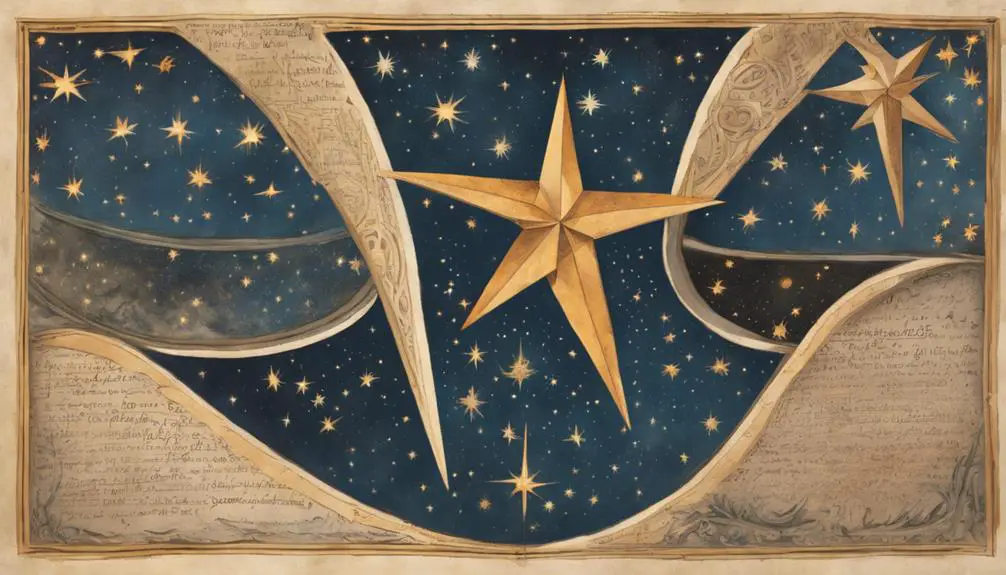
While Castor and Pollux aren't directly mentioned in the mainstream Biblical narratives, their indirect reference through the 'ship of Alexandria' in Acts 28:11, adorned with their figures as its figurehead, offers a fascinating insight into the cultural and religious syncretism of the time. This mention underscores the pervasive Greek mythology influence that permeated various aspects of life, including maritime practices, in the Hellenistic world.
You're observing here an intersection where ancient religious beliefs and practices bleed into the early Christian era, revealing a complex tapestry of cultural interweaving. The choice of Castor and Pollux as protectors for sailors—a belief deeply rooted in Greek mythology—highlights their perceived potency and the astronomical significance they held. These twins weren't only celebrated figures in myths but also stars in the constellation Gemini, guiding and guarding those at sea with their celestial light.
This reference in the Bible isn't merely an incidental mention; it's a window into understanding how deeply entwined Greek mythology was with the daily lives of people across the Mediterranean, including early Christians. It suggests that the cultural and astronomical lore of the time wasn't confined to the pantheon of a singular civilization but was a shared heritage, influencing and shaping the spiritual and physical navigations of diverse peoples.
Thus, the inclusion of Castor and Pollux's figures in a biblical account is a testament to the rich, layered interaction between different cultural and religious traditions. It invites you to consider the broader implications of such syncretism on the evolution of religious thought and practice, particularly in the context of the early Christian faith's development amidst a predominantly polytheistic society.
Who Were Castor and Pollux

Having explored their symbolic presence in biblical narratives, it's crucial to understand who Castor and Pollux were in Greek mythology and their enduring legacy in ancient cultures. These twins, immortalized in the stars as the Gemini constellation, hold a pivotal place in mythological origins, embodying themes of brotherhood, loyalty, and sacrifice.
Castor and Pollux, also known as the Dioscuri, were the sons of Leda, but they'd different fathers, which shaped their destinies. Castor, the mortal son of Tyndareus, the king of Sparta, excelled in horsemanship and combat. Pollux, the divine son of Zeus, possessed immense strength and was immortal. This dual paternity placed them both in the realm of gods and humans, allowing them to bridge the worlds in unique ways.
Their adventures, rich in heroic deeds and divine interventions, highlight their inseparability and devotion to one another. Their most celebrated tale involves a rescue mission to save their sister Helen, prefiguring themes of loyalty and protection that resonate through their mythology.
Upon Castor's death, Pollux's grief was so profound that he begged Zeus to let him share his immortality with his brother. Moved by this act of brotherly love, Zeus immortalized them together in the sky as the Gemini constellation, ensuring their inseparable spirits would continue to guide and inspire.
Their mythological origins and the vivid narratives surrounding their exploits underscore their significance in ancient culture, not merely as celestial figures but as symbols of unbreakable bonds and eternal companionship. Their legacy, deeply rooted in mythology, continues to captivate, offering rich layers of meaning to explore within the tapestry of human culture and belief.
Symbolism of the Twins
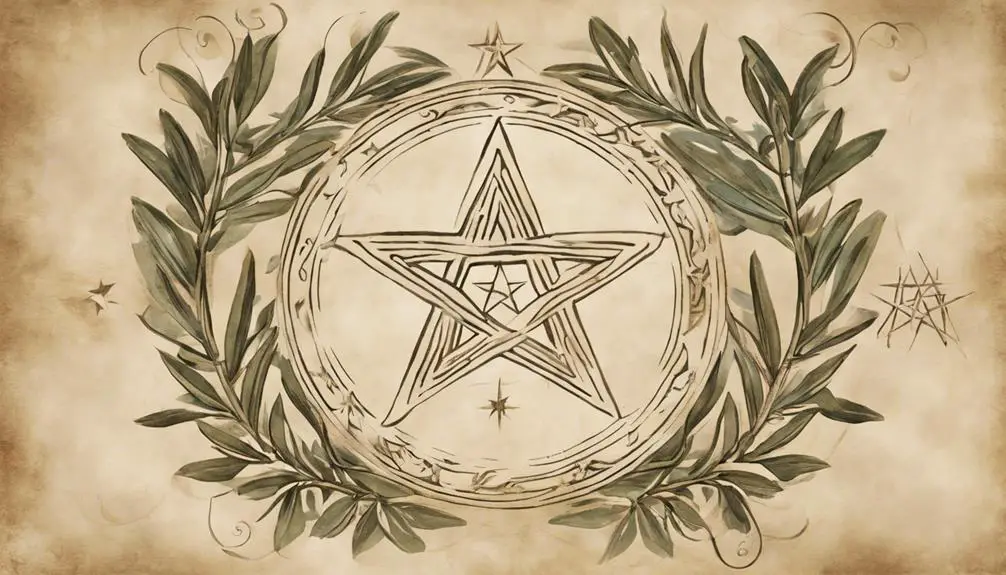
Exploring the symbolism of Castor and Pollux reveals a multifaceted representation of duality, brotherhood, and harmony within ancient and contemporary contexts. You'll find that these twins not only embody the concept of contrast but also complementarity, serving as a powerful symbol for the balance of opposing forces. Their story, deeply rooted in mythology, carries forward into the astrological connections we recognize today, particularly in the Gemini significance.
In astrology, Gemini, represented by the twins, signifies adaptability, communication, and the merging of opposites. This astrological sign echoes the ancient narratives of Castor and Pollux, emphasizing the unity and diversity inherent in all forms of existence. You're looking at a symbol that has been revered not just for its mythological appeal but also for its profound philosophical implications. The twins encapsulate the eternal struggle and eventual reconciliation between the mortal and the divine, the tangible and the abstract.
Moreover, their legacy illuminates the human condition, highlighting the duality within each individual. You're reminded that within every person lies the capacity for both strength and vulnerability, wisdom and folly. This symbolism extends beyond the personal, reflecting the broader cosmic order and the balance that sustains it.
Therefore, when you delve into the symbolism of Castor and Pollux, you're not just uncovering ancient myths. You're tapping into a rich vein of astrological connections that offer insights into the nature of duality, the importance of harmony, and the complex interplay between different facets of existence. Through their story, you gain a deeper understanding of the Gemini significance and its relevance in both personal and collective contexts.
Cultural Context
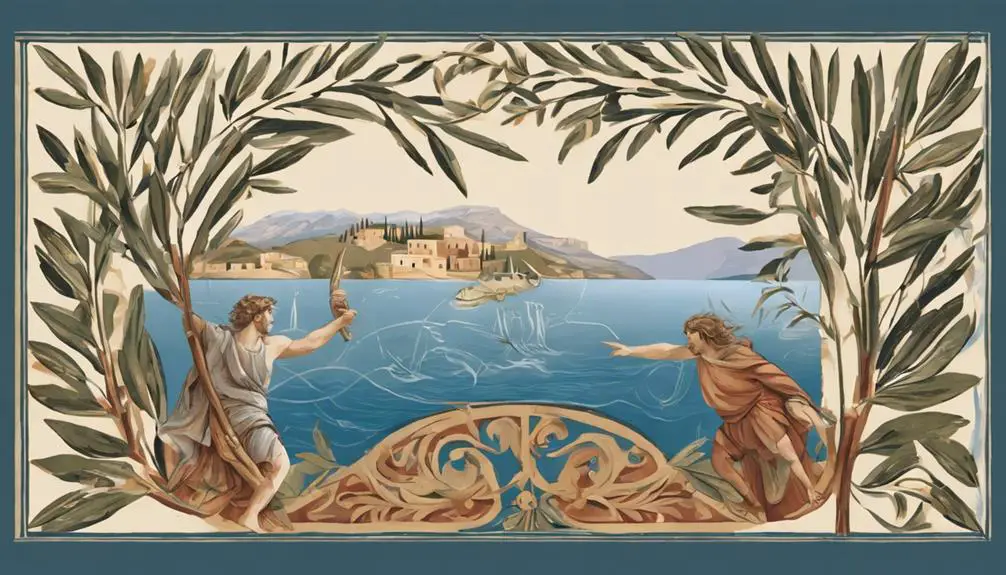
Understanding the symbolism of Castor and Pollux also requires examining the cultural context in which these myths emerged and evolved. In the vast tapestry of Greek mythology, these twin brothers stand out, not just for their adventures but also for what they symbolize within the society that created them. Their story, deeply rooted in the traditions and beliefs of ancient Greece, offers a window into how the Greeks viewed the divine, human excellence, and the thin line separating mortals from gods.
The cultural context of these myths is crucial in grasping their enduring appeal and the layers of meaning they've accrued over centuries. It's here, in the interplay of historical facts and mythological narrative, that one often encounters historical inaccuracies. These inaccuracies aren't mere oversights; they're a testament to the evolving nature of storytelling and the adaptation of myths to serve new purposes or emphasize particular moral or ethical lessons. Greek mythology, with its rich pantheon of gods, heroes, and extraordinary mortals, was never static. It adapted to the changing values, challenges, and aspirations of the society from which it sprang.
Delving into the cultural context of Castor and Pollux's story illuminates not only the specifics of their myth but also the broader societal values they encapsulate. This exploration reveals how ancient Greeks navigated the complexities of fate, brotherhood, loyalty, and divine intervention. It also highlights how these stories, while rooted in a specific time and place, continue to resonate, their core themes finding echoes in our own time, despite the historical inaccuracies and cultural shifts that separate us from their original creators.
Early Christian Navigation
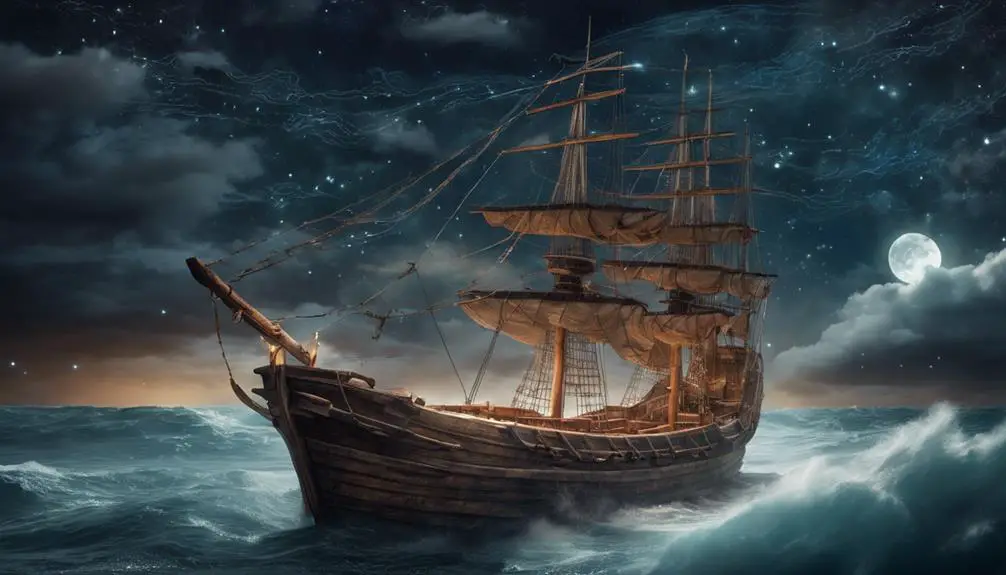
In the context of early Christian navigation, the figures of Castor and Pollux played a pivotal role, serving as celestial guides for sailors and symbolizing divine protection at sea. These twin brothers, revered in ancient mythology, found their way into Christian narratives, representing hope and guidance across tumultuous waters. Sea voyages, fraught with danger and uncertainty, were a significant aspect of early Christian missionary endeavors and trade. The reliance on celestial navigation, a practice as ancient as seafaring itself, was crucial in these endeavors. Castor and Pollux, visible in the night sky as part of the Gemini constellation, became symbols of safe passage and celestial navigation aids to those traversing the Mediterranean and beyond.
The integration of these figures into Christian symbolism wasn't merely a case of syncretism but a reflection of the pragmatic aspects of early Christian life. Mariners, upon spotting the Gemini stars, would often pray to Castor and Pollux for protection. This practice illustrates the seamless weaving of ancient celestial navigation techniques with the burgeoning Christian faith, highlighting a pragmatic approach to the divine in the daily lives of early Christians. The stars served not only as physical guides but also as spiritual beacons, reinforcing the belief in divine oversight during sea voyages.
This blending of ancient navigational practices with Christian theology underscores the adaptability and integration of pre-Christian traditions into Christian rituals and beliefs. It reflects a broader narrative of how early Christians navigated both the literal and metaphorical seas of their time, drawing on a rich tapestry of symbols and practices to bolster their faith and ensure their safety on perilous journeys.
Legacy and Interpretation
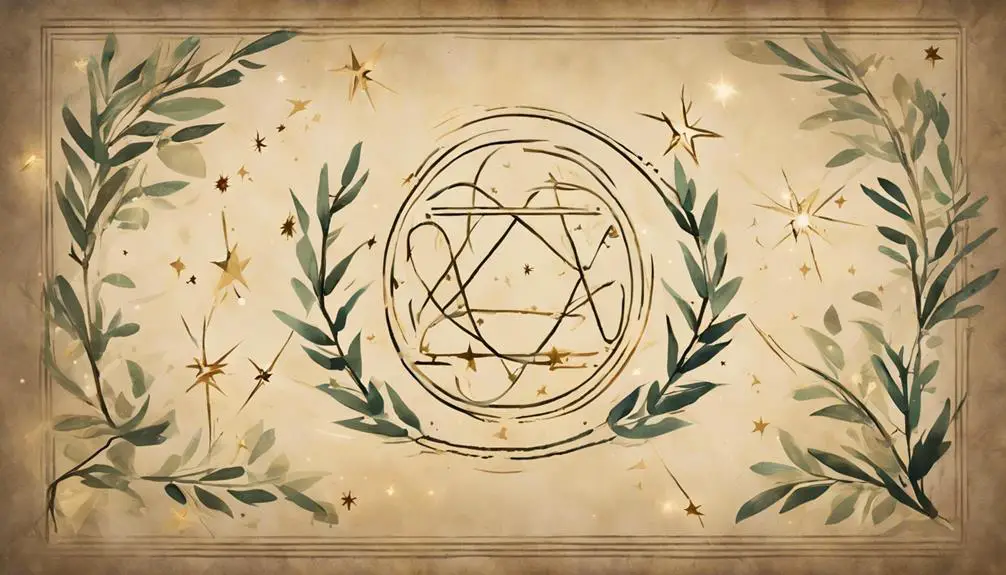
The legacy of Castor and Pollux in the context of early Christian navigation reveals a profound transformation of ancient symbols into beacons of faith and guidance for early Christian communities. This shift underscores how deeply intertwined pagan mythology and Christian iconography became, particularly in maritime contexts. You'll find that this amalgamation wasn't merely a superficial overlay of Christian meanings onto existing symbols but represented a deeper, symbolic realignment with the faith's core values and narratives.
Modern misconceptions often obscure the original significance of Castor and Pollux within early Christian symbolism. It's easy to dismiss their presence in Christian art and literature as mere remnants of pagan beliefs inadvertently preserved by early Christians. However, a closer examination reveals a deliberate and thoughtful integration of these figures into Christian narratives, serving as symbols of protection, guidance, and divine intervention. This nuanced understanding challenges the simplistic notion of a binary opposition between paganism and Christianity, highlighting instead a complex process of cultural and religious syncretism.
Artistic depictions of Castor and Pollux in early Christian art further illuminate their transformed roles. Initially revered as heavenly twins and protectors of sailors in Greek and Roman mythology, their images were adeptly reinterpreted by early Christians. In frescoes, mosaics, and illuminated manuscripts, you'll notice how they're often positioned as guiding stars, leading the faithful through the tumultuous 'seas' of life towards salvation. This recontextualization of their imagery not only exemplifies the adaptability and inclusivity of early Christian iconography but also serves as a testament to the enduring power of these mythological figures to inspire and guide across millennia.
Frequently Asked Questions
How Did Ancient Astrologers Interpret the Presence of Castor and Pollux in the Night Sky in Relation to Biblical Events or Narratives?
You'll find that ancient astrologers didn't directly link Castor and Pollux to biblical events or narratives. Instead, they viewed these stars as crucial for ancient navigation, embodying star symbolism in their guidance across seas.
Their interpretations were more about the practical applications and symbolic meanings in navigation rather than any direct biblical associations. This approach reflects a broader understanding of the cosmos, where celestial bodies served multiple roles, including spiritual and navigational aids.
Are There Any Rare Manuscripts or Historical Texts Outside the Bible That Link Castor and Pollux With Biblical Figures or Stories?
You're diving into whether there are obscure texts linking Castor and Pollux with biblical stories. While Gemini mythology weaves through ancient narratives, direct connections outside the Bible are scarce.
Archaeological findings have yet to unveil manuscripts firmly entwining these figures with biblical lore. Scholars continue their search, but as of now, such links remain elusive, suggesting these connections, if they exist, aren't well-documented or widely recognized in historical scholarship.
How Have Different Denominations Within Christianity Historically Viewed or Interpreted the Significance of Castor and Pollux Differently?
You're navigating through a sea of beliefs, where maritime symbolism shapes views. Denominational divergence marks how Castor and Pollux's significance is interpreted within Christianity.
Some see them as guiding lights, akin to their role for sailors, symbolizing protection and guidance. Others may delve deeper into allegorical meanings, reflecting on themes of brotherhood and sacrifice.
This analytical journey reveals the rich tapestry of interpretations, showcasing the diversity within Christian thought.
What Are the Specific Rituals or Practices That Early Christians Might Have Adopted or Adapted From the Worship or Veneration of Castor and Pollux?
You're exploring how early Christians might've integrated rituals from the worship of Castor and Pollux, twin figures in Gemini mythology. These twins were revered in maritime superstitions, guiding and protecting sailors. Christians, analyzing these practices, could have adapted certain rituals, possibly seeking divine protection at sea.
This adaptation reflects a blending of pagan traditions with Christian beliefs, showcasing the early church's efforts to find common ground with existing cultural practices.
How Has the Depiction of Castor and Pollux in Religious Art Evolved Over the Centuries, Especially in Contexts That Intertwine With Biblical Themes or Settings?
You've seen how the depiction of Castor and Pollux in religious art has evolved, reflecting broader changes in society and belief systems.
Initially, their portrayal was closely tied to classical mythology. Over centuries, artistic symbolism infused these figures with new meanings, often blending them into Christian narratives.
Modern interpretations have further diversified, showing a blend of ancient mythology and contemporary themes, illustrating the enduring influence of these mythic twins on cultural and religious imagery.
Conclusion
In your journey through the tapestry of biblical narratives, you've uncovered the constellation of truths surrounding Castor and Pollux. These celestial twins, more than mere mythological figures, embody the fusion of culture, faith, and maritime lore within early Christianity.
Their story, a beacon in the sea of scripture, illuminates the intricate interplay between pagan symbols and Christian beliefs, guiding believers like ancient sailors under a starlit sky. This exploration reveals the enduring legacy of Castor and Pollux, forever sailing across the heavens of biblical interpretation and cultural significance.


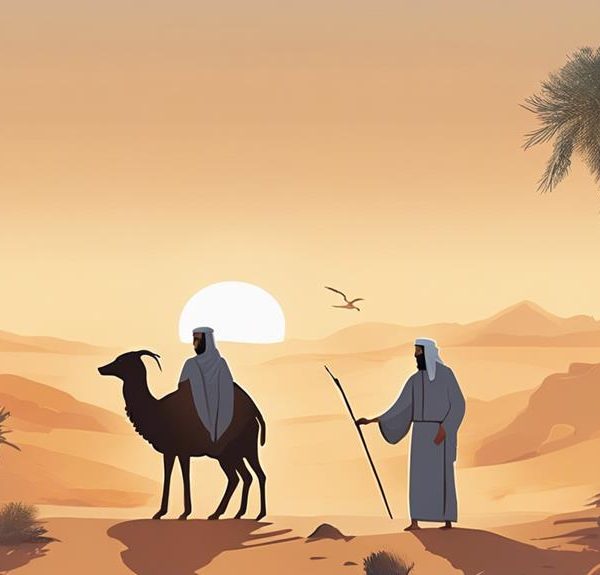
Sign up